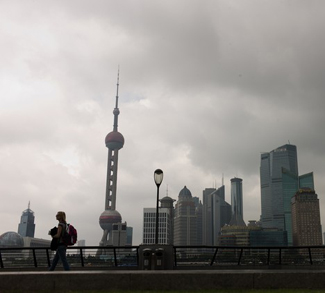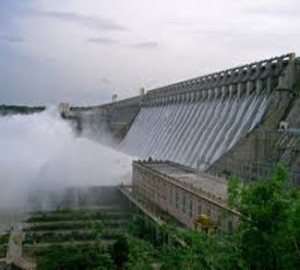Summary
As competition for FDI and trade share intensifies in a tightening global environment, more and more countries are looking at the potential of special economic zones to kickstart growth. But China aside, do these zones work? What have we learned from the experiences of developing countries over recent decades?
Analysis
It is more than 50 years since the establishment of the first modern special economic zones. But it is only relatively recently, particularly since the 1990s, that their popularity as a policy instrument has taken off. The International Labour Organization‘s database of special economic zones reported 176 zones in 47 countries in 1986; by 2006 this had risen to 3,500 zones in 130 countries (Boyenge 2007). Traditional export-processing zones (EPZs) were designed to attract investment by enabling countries to better exploit a key source of comparative advantage – low-cost labor – which was otherwise underutilized because of low levels of domestic investment and barriers (regulatory, infrastructure, etc.) preventing foreign direct investment (FDI). These EPZs have operated under simple principles:
Allowing investors to import and export free of duties and exchange controls;
Facilitating licensing and other regulatory processes; and
Usually freeing these firms from obligations to pay corporate taxes, VAT, or other local taxes.
To maintain control, EPZs have normally been fenced-in estates with strict customs controls at entry, and sales are typically restricted mainly to export markets.
The model has been extremely successful in many countries. For example, it allowed the Dominican Republic to create more than 100,000 manufacturing jobs and shift dramatically away from reliance on agriculture. Similar stories of industrialization and job creation can be seen in Mauritius, Korea, Taiwan, Honduras, El Salvador, and Madagascar, and more recently in Bangladesh and Vietnam. But the success of traditional EPZ programs owes something in part to an unprecedented era of globalization of trade and investment that took place since the 1970s and accelerated during the 1990s and 2000s, enabled by the vertical and spatial fragmentation of manufacturing into highly integrated global production networks. It is clear that this model of zones is now increasingly running up against its limitations. Indeed, it is perhaps no longer fit for purpose, given the changing macroeconomic and regulatory environment in the global economy.
Increasingly it is not the existence of a special-economic-zone regime, a compelling master plan, or even a fully built-out infrastructure that will make the difference in attracting investment, creating jobs, and generating spillovers to the local economy. Rather, it is the relevance of the special-economic-zone programs in the specific context in which they are introduced, and the effectiveness with which they are designed, implemented, and managed on an ongoing basis that will determine success or failure.
Attracting investment and creating jobs: Old models and new challenges
The recent success of Bangladesh underscores the importance of positioning the zone program to leverage the country’s comparative advantage. While the program in Bangladesh initially aimed to attract high-technology investment, it only took off when it made a concerted effort to focus on the garments sector, which allowed it to leverage its comparative advantage in low-wage labor. Beyond the wage-based advantages of Bangladesh, the critical contribution of the zone’s program was not, in fact, incentives, which are relatively modest in global terms, but rather the provision of serviced industrial land infrastructure and relatively reliable supply of power. Indeed, recent research ( Farole 2011) shows that on a global basis infrastructure reliability has a strong association with special-economic-zone success, while incentives have no measurable effect.
In contrast, the generally unsuccessful experience of zones in Africa to date highlights some important lessons in zone development. First, it is important to separate political support from political objectives in zone projects. While strong commitment from government is needed, projects must be carefully designed based on clear strategic plans – the commercial case must be there.
Second, despite the concept of zones as enclaves, in practice their success is almost fully entwined with the competitiveness of the national economy and the national investment environment. Many special economic zones are operating in an environment of poor national competitiveness. And regardless of what is done inside the zones, they face challenges in linking the zones and global markets, including critical infrastructure challenges regarding ports, roads, and electricity.
Third, putting in place a clear and transparent legal and regulatory framework codifies the program strategy and establishes the ‘rules of the game’ for all stakeholders involved in the process, but de facto implementation is of equal importance. In many special economic zones, the authority responsible for developing, promoting, and regulating the program lacks resources and capacity as well as the institutional authority to carry out its mandate.
Moving from static to dynamic gains: Can special economic zones deliver sustainable structural change?
For economic zones to be a success in the long term, they should contribute to structural transformation of the economy, including diversification and economic upgrading. Thus it requires leveraging dynamic economic benefits from investment and employment. Countries that have been successful in deriving long-term economic benefits from their special-economic-zone programs have established the conditions for ongoing exchange, and the accompanying hard and soft technology transfer, between the domestic economy and investors based on the zones. This includes investment by domestic firms into the zones, forward and backward linkages, business support, and the seamless movement of skilled labor and entrepreneurs between the zones and the domestic economy.
The case of the Dominican Republic, for example, highlights that while low labor costs, trade preferences, and fiscal incentives can each play a role in catalyzing a zone program, they are almost never sustainable. Indeed, they create pressure for further distortions and ’race to the bottom’ policies, including extending and increasing incentives (rather than addressing more difficult factors of the investment environment) and granting exemptions on minimum wage and labor rights (rather than addressing productivity or labor market rigidities).
The principal factors explaining why many countries have distorted economic structures and lack sufficient dynamism are political in nature. It is in this context that special economic zones can perhaps be most effective, in catalyzing processes of economic reform. Indeed, this is the classic case of China’s special economic zones, which were used as a vehicle to test liberal economic reforms, and introduce them to the wider economy in a gradual way. This is also the dynamic behind the much-heralded case of Mauritius, which not only highlights the importance of domestic investment in the zone’s program, but shows that integration of the zone program must go beyond the physical and financial – it must also be integrated strategically. One of the main differences between zone programs that have been successful and sustainable and those that have either failed to take off or have become stagnant enclaves is the degree to which they have been integrated in the broader economic policy framework of the country.
Finally, special-economic-zone impacts on host societies go well beyond economic efficiency. Zone programs which fail to offer opportunities for quality employment and upward mobility of trained staff, which derive their competitive advantage from exploiting low-wage workers, and which neglect to ensure environmental sustainability are unlikely to be successful in achieving the dynamic benefits possible from zones programs, and are likely to be forced into a ‘race to the bottom’. By contrast, zone programs that recognize the value of skilled workers and seek to provide the social infrastructure and working environment in which such workers thrive will be in a position to facilitate upgrading. Despite the historical concerns about special economic zones, they offer an ideal environment for social and environmental policy experimentation, not only because of their enclave nature, but also because they have built-in compliance mechanisms that do not normally exist outside the zones, such as control over firm licensing and the ability to monitor firms in a short time-frame.
Conclusion
Achieving success with zone programs in the future will require adopting a more flexible approach to using the instruments of special economic zones in the most effective way to make the most of the country’s sources of comparative advantage. This will require much broader policies than the narrow scope of any special-economic-zone program alone, such as:
Promoting skills development, training, and knowledge sharing;
Promoting industry clusters;
Supporting the integration of regional value chains; and
Supporting public-private institutions, both industry specific and transversal.
Most fundamentally, this will require a change in mindset away from the traditional reliance on fiscal incentives and wage restraint, and instead focusing on facilitating a more effective business environment to foster firm-level competitiveness, local economic integration, innovation, and social and environmental sustainability.



